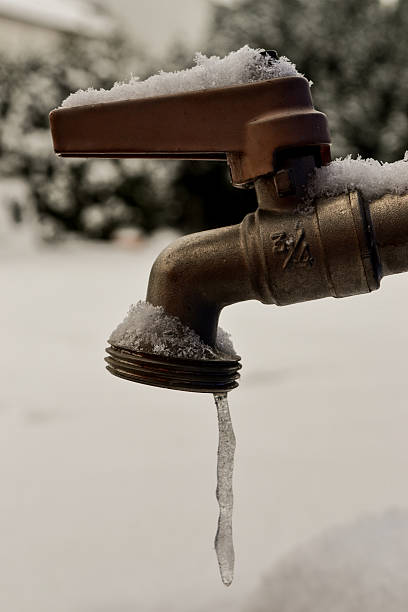Avoid Frozen Plumbing in Winter: Expert Advice
Avoid Frozen Plumbing in Winter: Expert Advice
Blog Article
We've unearthed the article about Preventing and dealing with frozen pipes down the page on the internet and decided it made good sense to share it with you on this site.

Cold weather can wreak havoc on your pipes, especially by freezing pipes. Below's just how to stop it from taking place and what to do if it does.
Introduction
As temperature levels decline, the threat of icy pipes rises, possibly bring about pricey fixings and water damages. Understanding how to stop frozen pipes is crucial for house owners in chilly environments.
Prevention Tips
Shielding vulnerable pipes
Wrap pipelines in insulation sleeves or utilize heat tape to shield them from freezing temperatures. Concentrate on pipelines in unheated or exterior locations of the home.
Heating strategies
Keep indoor rooms effectively warmed, specifically areas with pipes. Open cupboard doors to enable warm air to flow around pipes under sinks.
How to recognize frozen pipelines
Search for lowered water circulation from taps, uncommon odors or sounds from pipes, and noticeable frost on subjected pipelines.
Long-Term Solutions
Structural modifications
Think about rerouting pipelines away from exterior walls or unheated locations. Include extra insulation to attics, cellars, and crawl spaces.
Updating insulation
Purchase top quality insulation for pipelines, attic rooms, and wall surfaces. Appropriate insulation assists keep constant temperatures and minimizes the risk of icy pipes.
Safeguarding Exterior Plumbing
Yard tubes and outdoor taps
Detach and drain yard tubes prior to wintertime. Mount frost-proof faucets or cover outdoor taps with insulated caps.
Recognizing Icy Pipelines
What creates pipelines to ice up?
Pipes freeze when revealed to temperatures below 32 ° F (0 ° C) for extended durations. As water inside the pipes ices up, it broadens, putting pressure on the pipeline walls and potentially triggering them to burst.
Threats and problems
Frozen pipelines can lead to water disturbances, building damage, and pricey repair work. Ruptured pipes can flood homes and create extensive structural damage.
Indications of Frozen Pipes
Determining icy pipes early can stop them from bursting.
What to Do If Your Pipes Freeze
Immediate actions to take
If you suspect frozen pipes, maintain taps open up to relieve pressure as the ice melts. Use a hairdryer or towels taken in warm water to thaw pipelines gradually.
Final thought
Avoiding icy pipelines needs proactive measures and fast actions. By comprehending the causes, indicators, and preventive measures, homeowners can protect their pipes throughout winter.
6 Proven Ways to Prevent Frozen Pipes and Protect Your Home
Disconnect and Drain Garden Hoses
Before winter arrives, start by disconnecting your garden hoses and draining any remaining water. Close the shut-off valves that supply outdoor hose bibs and leave the outdoor faucet open to allow any residual water to drain. For extra protection, consider using faucet covers throughout the colder months. It’s also important to drain water from any sprinkler supply lines following the manufacturer’s directions.
Insulate Exposed Pipes
Insulating your pipes is an effective way to prevent freezing. Pipe insulation is readily available at home improvement stores and is relatively inexpensive. Pay close attention to pipes in unheated areas such as the attic, basement, crawl spaces, or garage. Apply foam insulation generously to create a buffer against the cold. You can also wrap your pipes in heat tape or thermostat-controlled heat cables for added warmth.
Seal Air Leaks
Inspect your home for any cracks or openings that could let in cold air. Seal any holes around the piping in interior or exterior walls, as well as the sill plates where your home rests on its foundation. Additionally, make sure to keep your garage door closed unless you’re entering or exiting. Leaving it open creates a significant air leak that can lead to frozen pipes.
Allow Warm Air Circulation
During cold snaps, it’s essential to allow warm air to circulate evenly throughout your home. Leave interior doors ajar to promote better airflow. Open kitchen and bathroom cabinets to help distribute heat consistently around the rooms. If you have small children or pets, be sure to remove any household chemicals or potentially harmful cleaners from open cabinets for safety.
Let Faucets Drip
A small trickle of water can make a big difference in preventing ice formation inside your pipes. When temperatures drop significantly, start a drip of water from all faucets served by exposed pipes. This continuous flow helps prevent the water from freezing. Additionally, running a few faucets slightly can relieve pressure inside the pipes, reducing the chances of a rupture if the water inside does freeze.
https://choateshvac.com/6-proven-ways-to-prevent-frozen-pipes-and-protect-your-home/

Hopefully you enjoyed our piece on 6 Ways to Prevent Frozen Pipes. Thank you for taking time to browse our content. Sharing is caring. Helping others is fun. I thank you for your readership.
Book Instantly Report this page